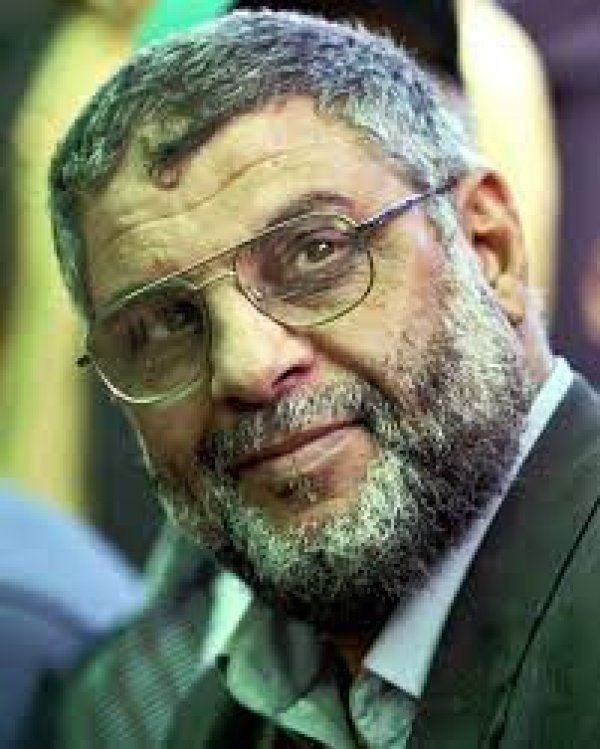
Abdel Aziz Ali Abdul Majid al-Rantisi (October 23, 1947 – April 17, 2004) was a Palestinian physician, politician, and one of the founders of the Islamic Resistance Movement (Hamas). He served as a leader of the movement in the Gaza Strip before his assassination. He was also a member of the administrative body of the Islamic Complex, the Arab Medical Association in the Gaza Strip, and the Palestinian Red Crescent.
Family Background:
The al-Rantisi family originated from the village of Rantis, northwest of Ramallah. They were forced to leave the village in the early 1940s and settled in the Khan Yunis refugee camp in the Gaza Strip when Rantisi was just ten months old.
Education:
Rantisi excelled in his secondary education, enabling him to obtain a scholarship from the United Nations Relief and Works Agency for Palestine Refugees (UNRWA) to study medicine in Egypt. He attended Alexandria University, where he earned a Bachelor of Medicine degree in 1971 and a Master's degree in Pediatrics in 1975. This qualified him to work as a resident physician at Nasser Hospital, the main medical center in Khan Yunis, in 1976. During his tenure as a physician at Khan Yunis Hospital, Rantisi frequently clashed with Israeli forces and spent approximately ten years intermittently incarcerated in Israeli prisons between 1983 and 1997.
Establishment of Hamas
Al-Rantisi was one of the leaders of the Muslim Brotherhood movement in the Gaza Strip when the incident of the trailer occurred. This incident shocked the Palestinian community when a Zionist trailer deliberately collided with a car carrying Palestinian workers, killing and injuring all passengers. This incident was seen as a deliberate act of murder aimed at Palestinian youths, especially university students who were in a state of constant confrontation with Israeli forces due to a series of Israeli provocations that targeted their dignity.
Regarding the establishment of Hamas, al-Rantisi said:
"I was responsible for the Khan Yunis area in the Muslim Brotherhood movement, and in 1987, we decided to actively participate in the uprising. We were seven: Sheikh Ahmed Yassin, Abdul Fattah Dukhan, Mohammed Shamia, Ibrahim Al-Yazouri, Salah Shahada, and Issa Al-Nashar. We chose the name Islamic Resistance Movement for our movement, which was later abbreviated to Hamas."
Palestine Anew
The Second Palestinian Intifada broke out on September 28, 2000, after Israel closed all avenues for the continuation of the brave peace project initiated by the Palestine Liberation Organization with Israel in 1994. Negotiation channels were blocked after the Camp David summit in the summer of 2000. The Israeli occupation intensified in the West Bank and Gaza Strip, accompanied by increased harassment. Israel reoccupied the West Bank, tightened the siege on President Yasser Arafat, and carried out several massacres in Jenin and other Palestinian cities and villages in the West Bank and Gaza Strip. Additionally, they targeted the militant Sheikh Yassin with a missile after he performed the dawn prayer on March 22, 2004, resulting in his death.
The Amir 'leader' of Hamas
After the movement Hamas pledged allegiance to al-Rantisi internally, he assumed leadership of the movement due to being one of its founders, senior mujahideen, and prominent leaders of the Islamic Resistance Movement. He was chosen for these reasons on March 23, 2004, to lead the movement in the Palestinian territories, specifically in Gaza, succeeding the martyr Ahmed Yassin.
Assassination Attempts
Dr. Aziz Duweik stated, "The first assassination attempt took place in Marj al-Zohour at the media tent on the first day of Ramadan. A person who spoke Arabic claimed to be a translator for a Japanese journalist entered the tent and left an entire bag. Everyone was outside the tent at the breakfast table... They heard the sound of the explosion and rushed to extinguish the fire and search for the journalist and his companion, but they found no trace of them."
On June 16, 2003, he survived a second assassination attempt in which two of his companions were martyred, and his son Ahmed was seriously injured. In September 2003, he survived a third assassination attempt which also failed. He then survived a fourth assassination attempt on the third day following the martyrdom of Sheikh Ahmed Yassin.
On April 17, 2004, Zionist warplanes targeted him and several of his companions. Dr. al-Rantisi was martyred along with two of his companions, marking the departure of the Gaza Strip from its leader, bidding farewell to the militant leader and founder in a grand ceremony befitting his jihad and sacrifices.

Share your opinion